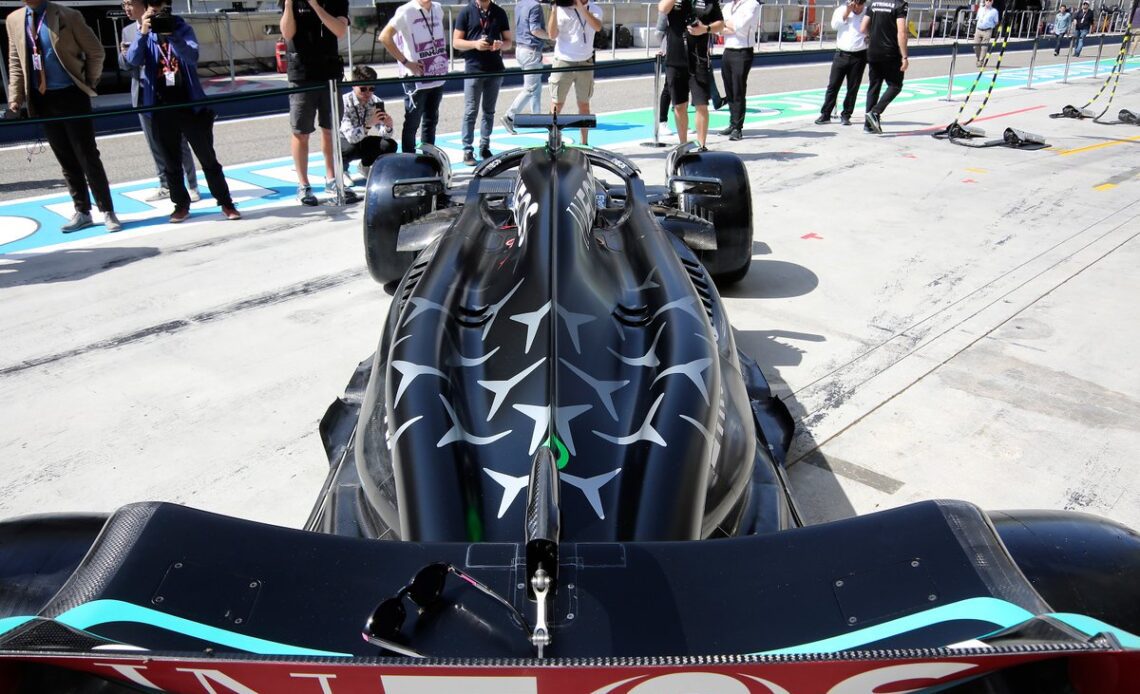Having seen that Max Verstappen could not be challenged for overtakes on the straights, and found it fairly easy to breeze past other drivers if he needed to, Red Bull’s opposition set about improving the efficiency of their cars and wings to reduce drag.
Mercedes found it needed a pretty big step on this front from its draggy W13, but found itself at the pre-season test in Bahrain still down in the speed traps. A look at what everyone was doing showed rivals were employing medium downforce packages and, in some cases, even trying out some of their lower downforce assemblies.
Mercedes, on the other hand, opted to run the entire test with its high downforce rear wing – a tactic that it had employed last year until a more trimmed-out version appeared in Miami.
Clearly aware that it would lose out to the opposition if it stuck to that tactic again, Mercedes had a new lower downforce rear wing ready for action for Bahrain.
While the design language of the wing might be familiar, especially if compared with others, you’d have to go back a number of years to find the last time that Mercedes used a spoon-shaped rear wing design.
This was part of a suite of rear wing solutions that Mercedes used from 2015 to 2018, and allows cars to enjoy both good downforce and low drag. The central, deeper portion of the wing produces the performance, while the outer, shorter chord portion of the wing blends with the endplate to reduce the drag.
Much like the Red Bull, the new Mercedes design bears its underbelly to the oncoming flow – similar to how the central section of a higher downforce wing would. The leading edge of the upper flap also has a thicker surface until it meets with the tip section. The cut-out in the upper rear corner of the endplate also returns, as a means to help control the tip vortex.
Mercedes W14 detail
Photo by: Giorgio Piola
As per how Mercedes built its wings during 2022, the new version has an interchangeable panel section, meaning that the team could make quick changes to adjust how the wing performs.
There’s always a trade-off when making decisions based around the amount and type of wing being used at each circuit, as while using a lower downforce wing will gain speed on the straights, it might ultimately result in losses through the corners.
Inevitably it comes down to what is quicker over the course of a lap, while also considering how much of an impact that choice has over the course of a race stint, with tyre…
Click Here to Read the Full Original Article at Autosport.com – Formula 1 – Stories…

